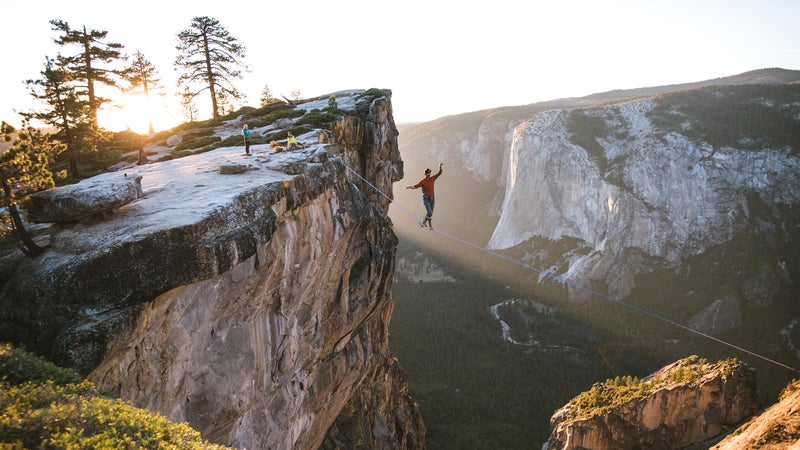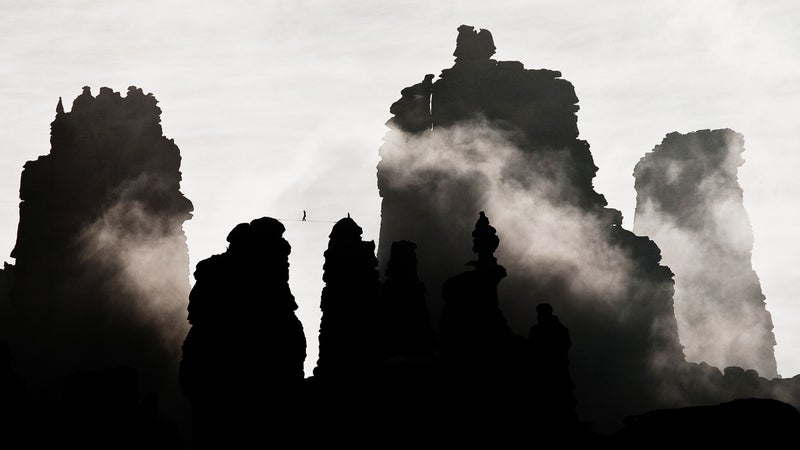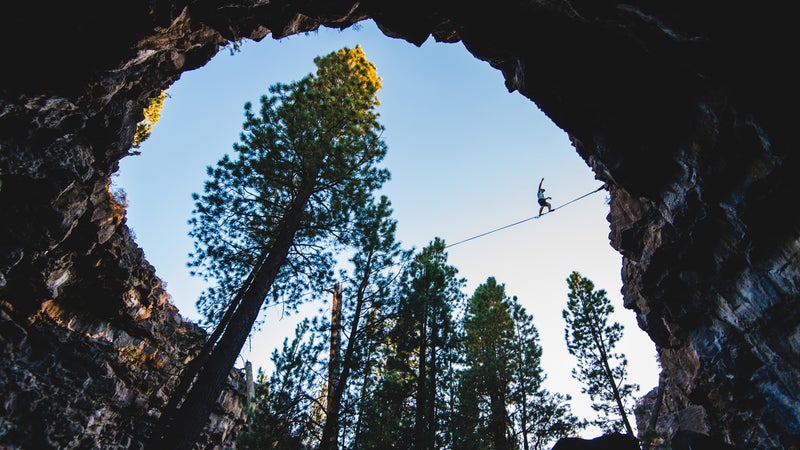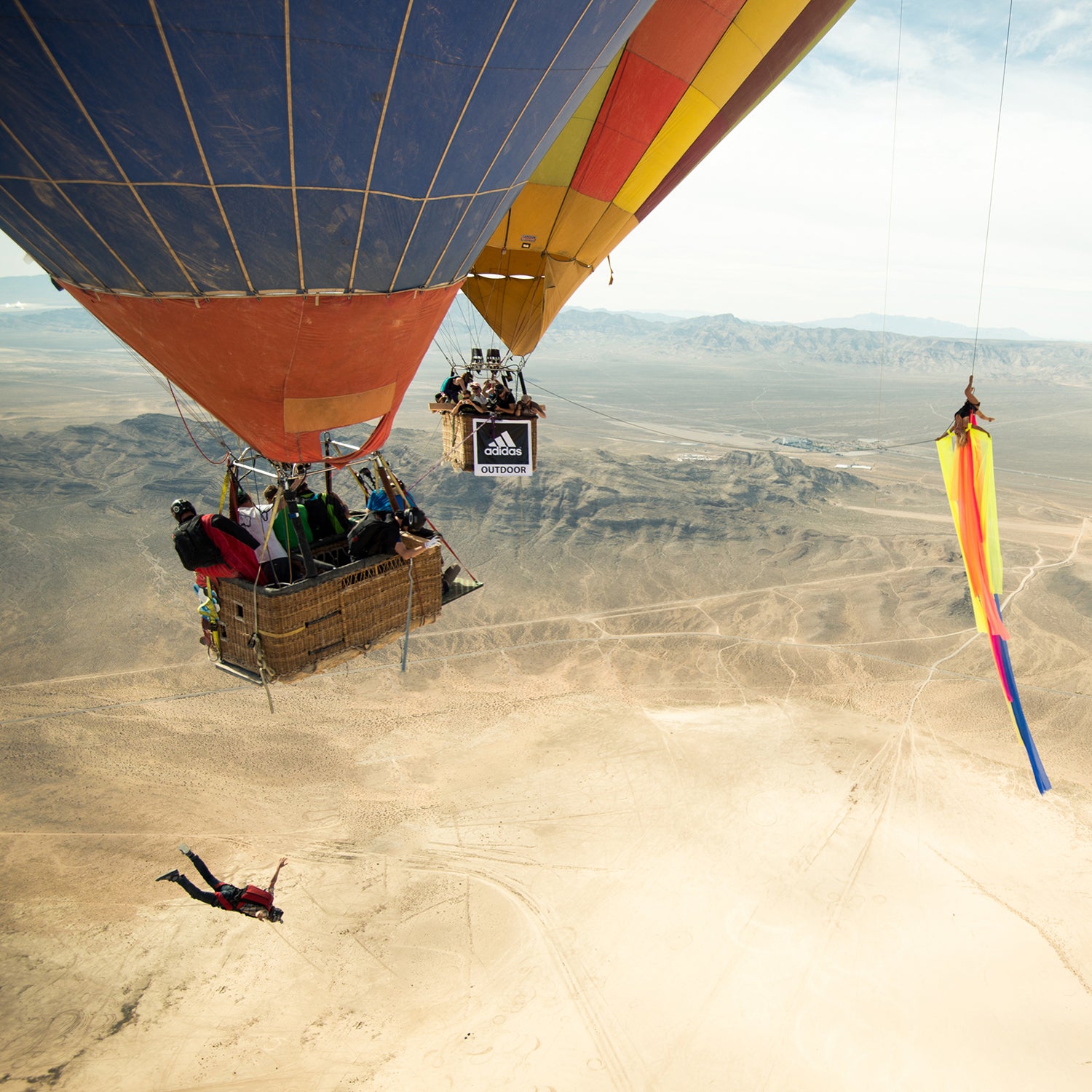In second grade,╠ř won $500 in a photography contest. With a disposable camera, he captured a╠řfriend in midair while jumping on the bed, hair standing straight up, a look of joy on his face. Rogers wouldn't think much more about photography in the coming years, but he did get serious about╠řsportsÔÇönamely╠řrock climbing and slacklining. Actually, he took up almost any sport that seemed crazy, like highlining and BASE jumping.
Things had come full circle by the time Rogers turned╠ř27. With so much knowledge about extreme sports in his back pocket, he decided╠řit was time to start taking pictures of his friends again. Except this time, instead of jumping on the bed, theyÔÇÖre running off cliffs.╠ř
Staring╠řdanger in the faceÔÇöand seeing it on his friendsÔÇÖ╠řfacesÔÇögives the Moab-based adventurer╠řunique insight into what motivates us to push boundaries. We asked him how he captures those intense feelings in one shot.

OUTSIDE: YouÔÇÖve participated in the╠řsports you shoot. Does that give you an advantage as a photographer?
ROGERS: It╠řnegates the need to establish trust with these athletes.╠řThey are already my friends. There are precise╠řmoments in these╠řsports that are about building your understanding of fearÔÇölike the first step onto a highline or that first moment you jump off a cliff. I know all of these moments firsthand.
How do you convey what itÔÇÖs like to be on a highline to someone who has never done it?
My goal is to portray a personÔÇÖs relationship with fear. You may have never been on a highline, but youÔÇÖve applied for a job. YouÔÇÖve broken up with someone or been broken up with. We all go through things we are uncomfortable with. We all take chances. ThatÔÇÖs kind of my goalÔÇöto show that this is another way to identify fear in your life and take control. To do that, I focus a lot on feet, because thatÔÇÖs what we use in this sport. Then I look at eyes and facial expressions, whether itÔÇÖs a deep, intense focus, or a calmness, or any kind of observable fear.
With highlining, falling is really cool to capture,╠řbecause once you fall, itÔÇÖs kind of like all the fear goes away. The fear is there in every step you take, because you have to keep working to succeed at walking that line. Every time you fall, youÔÇÖre giving up a little,╠řand thereÔÇÖs kind of a release. I see a lot of people smiling when theyÔÇÖre falling because they are happy they can take a rest and chill.

How do you decide where to set up your shot?
I understand exactly where the parachute is going to open, or I know where someone is going to be struggling the most on the highline. Sometimes itÔÇÖs real quick╠řand you just snap off a couple of photos. You canÔÇÖt anticipate everything. And sometimes those spur-of-the-moment shots are the ones I like the most.
What kind of gear do you use?
ItÔÇÖs nice to have really fast lenses, specifically with BASE╠řjumping, because it happens really quickly, and it takes a long time to reset that shot if you miss it. Not only does your subject have to get back to the site and╠řrepack their parachute, but the conditions have to be right. It might be three days before you can shoot from there again.
How do you capture the enormity of these settings?╠ř
If you were to just take a landscape photo, thereÔÇÖs no sense of scale, but with a human in the shot, that immediately gives a sense of scale.╠ř

Do you ever worry about dropping your gear?
I insure all my gear. I clip gear into a climbing leash. I also have a few bags with interesting openings that allow╠řme to pull stuff out without gear falling out. And you try to hold on for dear life, because that would ruin your day if you lost your gear.
Do you still get to participate in the sports when youÔÇÖre shooting?╠ř
A lot of the time, IÔÇÖm shooting with my group of friends, so itÔÇÖs very much a group effort. Particularly with highlining, it takes a lot of work to rig it up, and it takes a lot of gear. ItÔÇÖs very rare that╠řIÔÇÖm able to show up with just a camera. ItÔÇÖs good, but itÔÇÖs also distracting and challenging, but I enjoy it because it allows me to do both.


